When I first walked into the occupational therapists “sensory gym”, my mouth hung opened.
The large expanse was full of all sorts of multicolored equipment from floor to ceiling. Not only were my kids eager to play while getting their sensory needs met, I wanted to join in too (that’s how crazy inviting and fun the place was!)
But after a minute or two, my adult sensibilities kicked in and I realized that while this place was impressive, the cost associated with the sensory equipment must be too!
I began to keep a close eye on what equipment my kids LOVED, what equipment was used for LOTS of different activities, and what would give me the most bang for my buck.
Now that we’ve been at this sensory parenting thing for 7 years and I’ve heard from literally thousands of other sensory parents about what works best for their kiddos, I am really excited to share with you what sensory toys are worth saving up for and WHY!
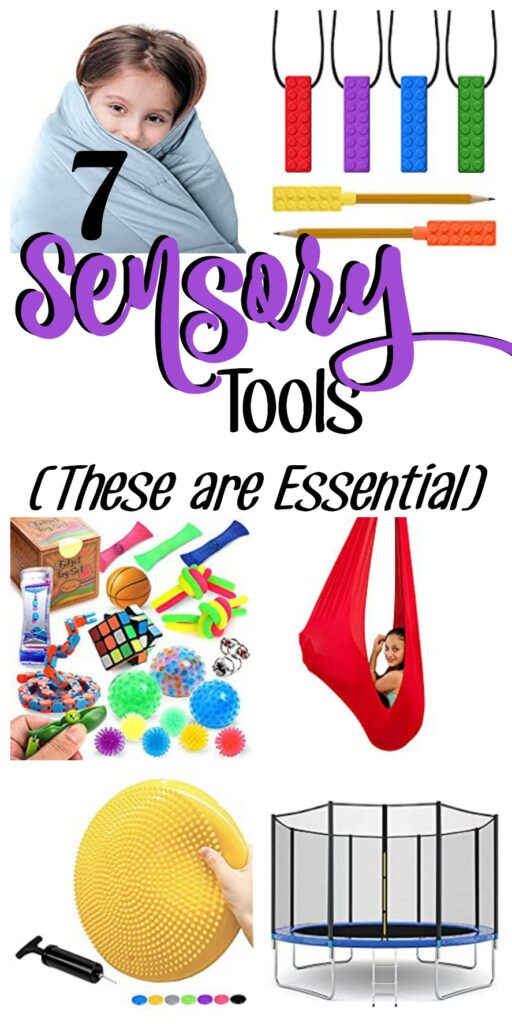 This post contains affiliate links for your convenience. Please read my full disclosure policy HERE.
This post contains affiliate links for your convenience. Please read my full disclosure policy HERE.
Sensory Toys that EVERY Home Should Have
1. Trampolines
[Main Use: Regulation Through Proprioception. Secondary Use: Vestibular Input.]
When I asked my private Facebook group of sensory parents “What is the one sensory toy your kids couldn’t live without?” Trampolines were the overwhelming majority. And there’s a scientific reason for that. Trampolines meet two very central sensory needs AT THE SAME TIME!
Jumping on a trampoline provides vestibular input via the inner ear. Seekers in this area crave heights and movement and trampolines are ideal ways to get it! (Even if your child is a vestibular avoider like my son is, consider getting an indoor trampoline with a bar for stabilization. That might be enough to help them grow in confidence. This Indoor Trampoline can be folded up!?! And comes with a removable bar, AND can be turned into a bar pit! Say what?)
The main reason trampolines are a must have in every sensory home is because of the outrageous amount of proprioceptive input they provide. Proprioceptive input is received by the joints and the ligaments of the body and establishes body awareness. It is the key to regulation and when a child is getting enough proprioceptive input, they usually can handle all the other sensory input far better!
Obviously, jumping on a stretchy surface provides plenty of proprioceptive input! Looking for a Large Outdoor Trampoline? Check this one out!
2. Swing
[Main Use: Vestibular Input. Secondary Use: Calming Through Proprioception.]
Another multitasking heavy hitter is the swing! Now there’s a million different types of swings that have different advantages. But they all provide lots of vestibular input through height and movement changes. Many sensory kids could contentedly swing for hours!
It might surprise you, but swings also give some proprioceptive input as well. Without boring you with a physics lesson, whenever a child comes to the top of the arch and changes directions, there’s a pull on their body to continue in the direction they were going already. This “pull” provides all over proprioception that can be extremely calming.
Related: Which Sensory Swing is Best for Your Child
Swings are the go-to essential for calming down in our house. We use a stretchy fabric swing to cocoon our kids and gently rock them back and forth while they recover from a sensory meltdown. It has never failed to work. Never.
Checkout a ton of sensory swing reviews and options by clicking here. You’ll learn which ones work best for each scenario.
3. Wiggle Seat
[Main Use: Helping Wiggly Kids Sit Still. Secondary Use: Vestibular Input.]
These Seemingly Simple Little Disks are awesome in their versatility and affordability! Typically, they are used to assist kids in getting sensory input, while still staying seated. Great for homework time or dinner time, kids can get their wiggles out, while actually being able to focus on the task at hand BETTER!
But wiggle seats are also durable enough to be stood on. So there are hundreds of ways to use them to challenge the vestibular system and engage the brain in tons of beneficial ways! Here are just a few ways we’ve used these wiggle seats.
4. Weighted Blanket
[Main Use: Calming Proprioception. Secondary Use: Better Sleep.]
Chances are good that you’ve heard about Weighted Blankets are the way they can help with anxiety and insomnia. But maybe you didn’t know that the reason they work is because they provide calming proprioceptive input to the body. While some proprioceptive sensory input takes a lot of energy (like the trampoline) weighted items are ideal for comforting and preparing a body to rest.
We love our weighted blankets around here, myself included! When kids get better sleep, they have less sensory issues, so this is a really good upward spiral to get on! I go into a lot more detail about the benefits of weighted blankets HERE. 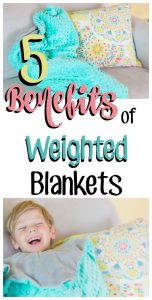
5. Fidget
[Main Use: Better Focus. Secondary Use: Proprioceptive Input.]
There are thousands of varieties of Fidget Toys. But each one basically gives the hands something to do so that the mind can focus on the work it needs to do. While it may seem counter intuitive, fidgets PREVENT kids from getting distracted. If a child has the need to move, the brain will be preoccupied with meeting that need, INSTEAD of listening and staying on task. But give those fingers something to do, and BAM the brain can pay MUCH better attention.
I recently started a sensory needs “program” at our church and have been loaning out fidgets and other sensory toys to aid kids during the service. I can’t tell you how many parents have told me after the service that they ended up using the fidgets themselves and we able to stay engaged during the sermon remarkably better than without the fidgets!
6. Chewy
[Main Use: Oral Sensory Input. Secondary Use: Proprioceptive Input.]
If your child likes to put things in their mouths (well past the baby stage), then it is usually a sensory need the are trying to meet. The mouth is a highly sensitive area of the body where a lot of intense sensations are produced. There are bunches of objects specifically made for helping kids get oral sensory input and they’re generally called “Chewies“. Think of them as fidgets for the mouth.
But a lot of parents make the mistake of thinking that these tools only solve one problem (helping curb the appetite to chew on inappropriate items like clothing or fingernails). The reality is that chewies are fantastic ways of getting the ever prized proprioceptive into as well! How? The jaw is a powerful joint, and the chomping provides great calming and regulating sensations so that the brain is more prepared to organize and respond appropriately to other sensory input.
7. Ear Phones
[Main Use: Prevent Sensory Meltdowns. Secondary Use: Prevent Sensory Meltdowns in Mom.]
All the other sensory toys and equipment listed in this article help a child get the sensory input they need. This last one, helps keep out sensory input that is bothersome and can trigger meltdowns in kids with auditory avoiding needs.
Noise Reduction Ear Phones are a staple in our home. When my son was younger, I always had a pair in my purse (see what sensory toys I still keep with me when we leave the house) Now we have two pair in a central place in our house for anyone to grab when they notice themselves feeling overwhelmed by the noise or frequency of sound. Why two pair? Well, because I’ve started wearing them during the time of day I’m most likely to loose my temper (making dinner!). Surprisingly, when I put them on, I can still hear my kids and converse with them. Yet something about the jarring pitch of dogs barking, cabinets slamming and LEGO crashing is lessened and I find myself far more calm and able to be an adult! Total game changer for our family!
Want MORE sensory tools and content?
- Outdoor Sensory Toys to Make Your Yard a Sensory Heaven
- Sensory Tools to Reduce Anxiety
- The Ultimate List of Sensory Toys for Every Need
- How to Stock a “Calm Down” Bin
- The Pros and Cons of an Official SPD Diagnosis
(Trying to save money?
Needing to buy time before you can afford some of this equipment?
Check out this post about how you can turn normal household furniture into a sensory oasis!)


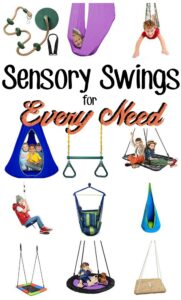





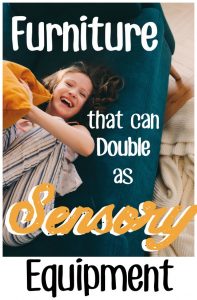



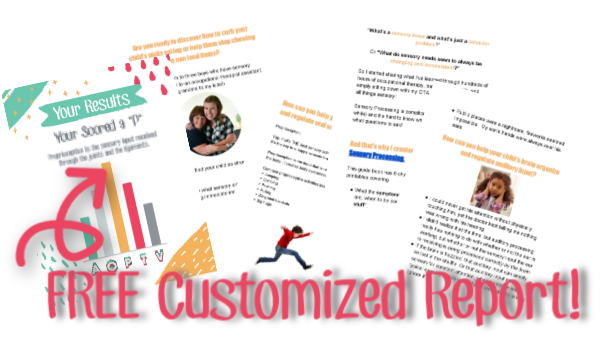
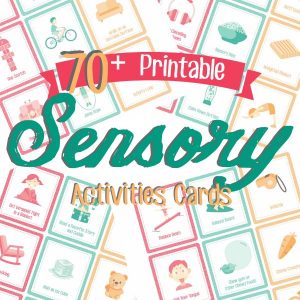
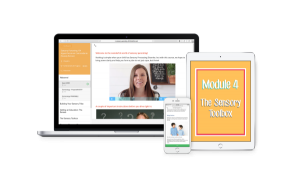
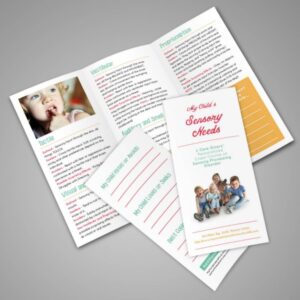
Leave a Reply